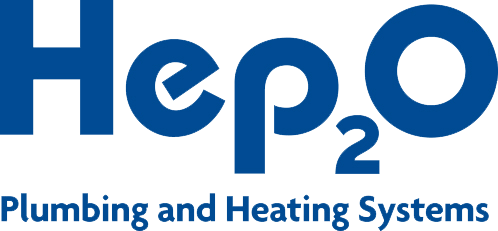Back
The secret to Digital Marketing Success in 4 steps
 According to a report conducted by ‘Internet World Stats’, a whopping 2,405,518,376 people were regular users of the internet in 2012, 556% more than were active in 2000.
According to a report conducted by ‘Internet World Stats’, a whopping 2,405,518,376 people were regular users of the internet in 2012, 556% more than were active in 2000.
With statistics like that, it’s no wonder digital marketing is absolutely essential if your business is to survive in the modern era. 65% of the sales cycle is complete by the time a customer makes contact with you – that means they have already visited your website, visited your competitor’s website(s), researched your blog, followed your social media posts, read news stories about your company online – all before you have had a chance to speak to the customer in person.
It’s a sobering thought, but if a customer doesn’t’ like what they see online, they won’t bother to contact you and the sale will be lost forever – even if they would have actually benefitted from your product or service.
So how can you make sure you’re engaging with your customers online and not ‘turning people off’ and losing valuable leads? These days digital marketing is more than just having a website. It encompasses search engine optimisation (SEO), pay-per-click (PPC), social media, re-marketing, content marketing and more. Digital marketing can seem complex, but essentially there are four core elements you need to get right. These are:
- Create quality content
- Attract customers to your website
- Convert leads once they’re on the site
- Up-sell and Cross-sell to existing customers
1. Create quality content
In marketing circles, “content” is the new buzz word. You need to create content that your target audience wants to read and will hopefully share with friends. The content shouldn’t be too ‘sales’ orientated, customers don’t want to feel they’re being pressured to buy, but you should instead aim to add value and give the reader something that will benefit them. Customers will then warm to your brand and when they are ready to make a purchase, they will choose you instead of your competitors.
Your content needs to be relevant but doesn’t necessarily have to be about your products. The blog for home improvement giants Everest is a good example. Everest sell windows, doors and conservatories, yet their blogs cover a wealth of topics including “how to banish furry pests in the garden” and another about the Royal baby. While this may appear an unusual, Everest is careful to ensure these blogs relate to home improvements in some way, positioning them as trusted experts.
Content doesn’t need to be new – you can ‘recycle’ good pieces and turn it into something fresh. Say you have just written an article. You should re-write it, change the angle slightly and turn it into a ‘how to’ guide. Then create an infographic, a slide show or a video – just keep reinventing that piece of content to get maximum value from one idea.
Content comes in a wide variety of forms including:
- Blogs
- News stories
- Infographics
- Slide shows
- White papers
- Reports
- Videos
- ‘How to’ guides
- Industry updates
2. Attract customers to your website
Once you have good quality content, you will be able to start attracting customers to your website. Search engines like fresh, relevant content and the creation of this should be the cornerstone of your Search Engine Optimisation (SEO) strategy. Make sure you are updating your website at least once a week (everyday ideally) and the content is packed with relevant keywords – this will push you up the Google rankings.
Social Media
One incredibly effective way of driving traffic to your website is through social media. If you’re a B2B company, Twitter is arguably the best social media platform. Start by following customers, potential customers, people in the industry, high profile business people and start interacting. When you start to gain followers of your own, that is when you can really start to see results. Every time you post new content to your website make sure you share this with your followers. If they like it, they will click through to your website and start engaging with your brand, nudging them through the sales pipeline.
If you’re a B2C organisation, Facebook is a must. First you must encourage people to ‘like’ your page, then you must work hard to keep them interested and engaged. Consider running special offers and promotions – this will encourage people to ‘like,’ ‘share’ and generally create a buzz around your brand.
Pay Per Click
While search engine optimisation is an on-going marathon to grow your authority over time, Pay Per Click (PPC) advertising is a great way to start lead generation right away.
PPC is a way of driving direct traffic to websites, in which advertisers pay the website owner when the ad is clicked. Advertisers bid on keyword phrases relevant to their target audience and these are commonly charge a fixed price per click. PPC ‘display’ advertisements, also known as ‘banner ads’, are shown on web sites or search engine results with related content that have agreed to show ads. PPC is very attractive to people working in sales, marketing and finance, because it is directly measurable.
Re-marketing
Quite often customers will visit your website, be interested in your products or services but aren’t quite ready to buy. Re-marketing enables you to re-engage with these customers at a later date, reminding them of your offering so when they are ready to buy you’re first in the queue.
3. Convert leads
Once prospects are on your website you need to make sure you convert these into customers. Every page on the website needs to have high impact ‘call to actions’ which encourage people to make an enquiry and leave their contact details. The call to actions can come in a variety of forms including ‘request a brochure’, ‘book an appointment,’ ‘request more information’ and the purpose is to collect the contact details for the sales team to follow up.
It depends what type of product or service you are offering, but as a rule of thumb keep the enquiry forms simple and easy to fill out. If prospects have to input too much information they will get bored, not fill out the form and the lead will be lost forever.
4.Upsell and cross sell
Once you have converted a customer that doesn’t mean you can sit back and relax, you now need to up-sell and cross-sell to generate maximum revenue from that business or customer. It’s often easier to sell to an existing or ex customer than a cold lead as they already know and trust your brand.
Having an email marketing strategy that targets existing customers is an extremely powerful tool. Use email to ‘remind’ existing customers of everything that you can do for them and introduce new products – if you have never done this before you will be amazed at the results. If your business offers multiple products and services, there is a very good chance existing customers are not aware of your full range and could be buying from someone else. Simply letting customers know what you offer is sometimes all it takes to create a massive increase in sales.
So there you have it – a quick introduction to digital marketing and four key areas you need to get right. The Purplex team will continue to post marketing advice blogs so make sure you bookmark this page and come back for more information.
If you would like to know more about Purplex and how we can help, just call us on 01934 808132 (Overseas enquiries +44 1934 808132) or use our enquiry form.
This entry was posted in Digital Marketing





